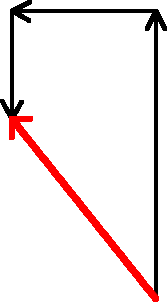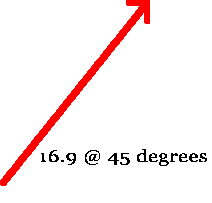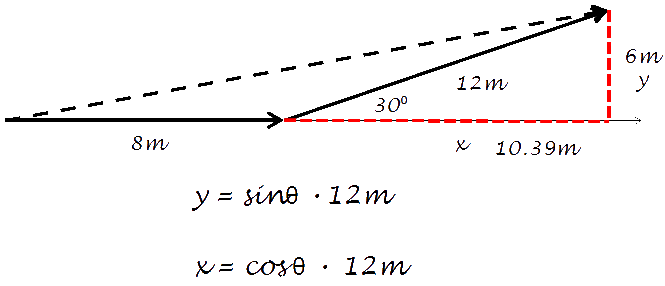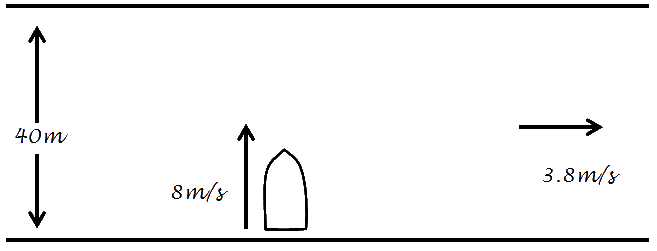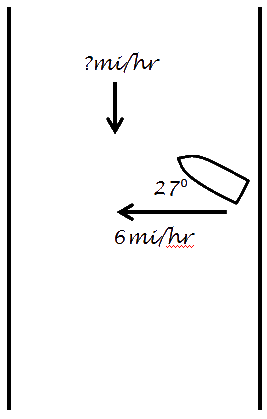Vectors
Scalar quantities have magnitude only.
Vector quantities have magnitude and direction
Anatomy of a Vector
Vectors should be drawn to scale:
10 m should be twice as long as 5 m
|
Speed Links Worksheets |
|||||||||||||
Vectors get added “head to tail” (or “tail to head”)
Adding vectors is the same as connecting them head-to-tail. A vector contains a magnitude (length of the arrow which is the value of whatever
Adding multiple vectors will give you a single resultant vector.
It does not matter in which order you add the vectors.
For example:
Graphically Adding Vectors worksheet To calculate the resultant vector’s magnitude and direction:If you can take two vectors at right angles and make a diagonal vector,
Can be: What is the length of the resultant?
Separate the right vector into its x- and y- components.
By adding the original 8m plus the horizontal component (x) of the angled vector, Then using the vertical component (y) of 6m, you can get the length of the You can calculate the angle or the resultant vector by using the arc tangent of 6/18.4:
River ProblemsProblem #1
a) 82m/s + 3.82m/s = 8.82m/s (velocity also includes the angle: b) tan(25.4˚) = x/40m (the right triangle in this case is the 40m-wide river, c) v = d/t therefore t = d/v Problem 2 a) TOA Examples of how river vectors are applied in the real world: River Vectors worksheet 1 |
||||||||||||||
 Over fifteen years of Medina On-Line 1994-2011 |
||||||||||||||



